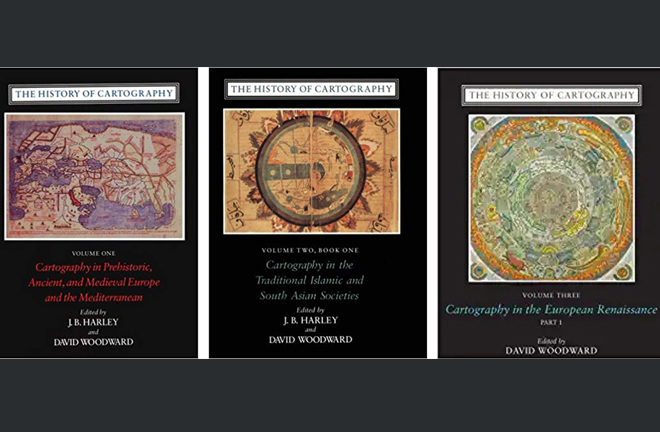Scholars discuss latest achievements in history of cartography

The first volume of The History of Cartography was published in 1987 and the three books that constitute Volume Two appeared over the following eleven years. Photos: AMAZON
To boost global exchange in the study of cartographic history, Yunnan University and the Institute of Ancient History at the Chinese Academy of Social Sciences (CASS) recently organized the Frontier Forum on Cartographic History and the International Seminar on the History of Cartography Translation Project. Experts reviewed research and cast light on several topics, such as cartographic history and maps’ relationship with culture and history. They also discussed the latest scholarly achievements in the field.
The History of Cartography Project is a research, editorial and publishing undertaking on the history of maps and mapping. It regards maps as cultural artifacts created from prehistory through the 20th century. Its major work is the multi-volume The History of Cartography series.
Cheng Yinong, director of the Institute of Historical Geography at Yunnan University, has been tracing the narrative of the history of ancient Chinese cartography. In Cheng’s view, academic research cannot be separated from the times, so the narrative of history is limited by the times. Previous historical narratives based on Eurocentrism are being increasingly challenged as social demands have changed over time. Historical perspectives are becoming more diverse than when the focus of cartography used to be on maps of states. Now the field is shifting to more specific topics. Scholars are also looking beyond the established corpus of maps. Therefore, the history of ancient Chinese cartography is destined to be examined in multiple ways.
Matthew H. Edney is director of the History of Cartography Project and Osher professor in the history of cartography at the University of Southern Maine. Regarding the latest study of the map-making process, the method opening the study of cartographic history to social and cultural concerns, scholars treat maps as not only objective subscriptions of the world but also cultural materials and social tools, Edney said.
This conception, however, holds back the study of cartographic history for its failure in tracking how cartography evolved over time. In this context, Edney proposed two views. First, it behooves us to reconsider the diversity of mapmaking practices. Scholars should rethink the ways of making, circulating and using maps of different types, and they should review the way technological revolutions have interwoven with social and cultural transformation. Second, scholars should reevaluate the openness of maps and recognize the complexity of mapmaking. The understanding of a map should start with the discourse of cartography.
Li Xiaocong, a professor at the School of Humanities at Shanghai Normal University, linked mapping to culture and analyzed the Great Wall based on maps. He said that no later than the Song Dynasty (960–1279), the Great Wall had become an icon drawn on ancient Chinese maps. The Great Wall integrates China’s farming region and the region relying on animal husbandry, which is why it appeared consistently on ancient Chinese maps. Today, the Great Wall has become a conceptual symbol for a boundary and a geographical element that must be marked on Chinese maps and even some world maps.
The History of Cartography translation project is a major project bidding for potential support from the National Social Science Fund. At the event, the team members presented the translation progress and scholars brainstormed solutions to the related difficulties. The translation project began in 2014 aiming at translating the first three volumes of The History of Cartography into Chinese. It is presided over by Bu Xianqun, director of the Institute of Ancient History at the CASS. The team is close to finishing the translation of the first three volumes. The project is scheduled to be completed at the end of 2019 and the books to be published in 2020.
edited by MA YUHONG

 PRINT
PRINT CLOSE
CLOSE